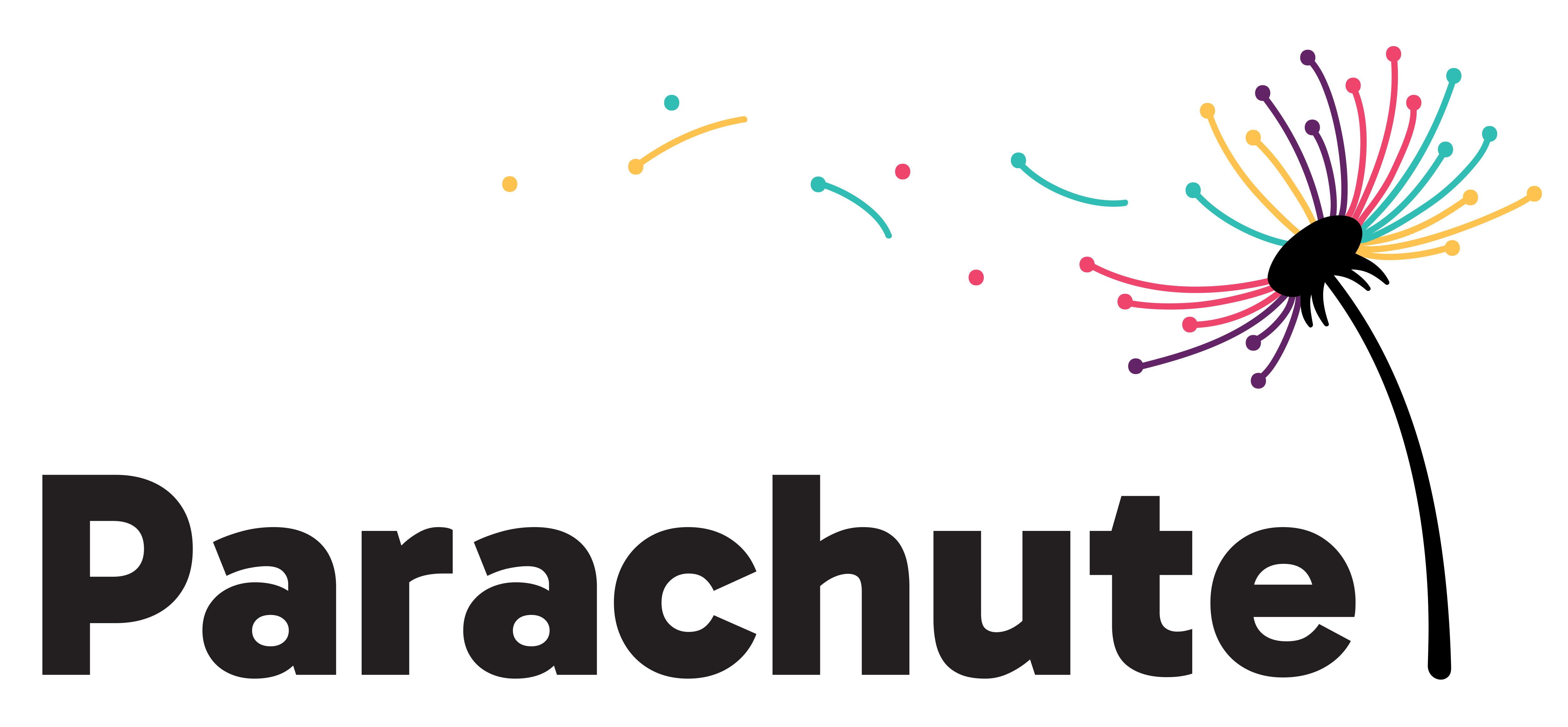Why charities are going back to full URLs in SMS messages
 SMS remains one of the most effective fundraising tools, with 98 per cent open rates and rapid response times. But public trust is waning, and regulators are paying close attention.
SMS remains one of the most effective fundraising tools, with 98 per cent open rates and rapid response times. But public trust is waning, and regulators are paying close attention.
In 2024, the Australian Communications and Media Authority (ACMA) issued 1,071 compliance alerts to businesses after complaints about potential spam law breaches. Enforcement efforts included a record $7.5 million fine issued to the Commonwealth Bank of Australia for more than 170 million illegal marketing messages.
The pressure on all sectors, including charities, is mounting. So, what can you do about it?
After years of using short links to keep messages lean and mobile-friendly, charities are now making the very deliberate choice to include full, branded URLs in their SMS campaigns. Here’s why…
Post-election SMS fatigue
Australians have been bombarded with political SMS messages in recent election cycles – many of which came from unknown numbers, used suspicious short links, had no clear sender ID and no option to unsubscribe. They blurred the lines between legitimate communication and spam. Worse still, they interrupted dinner, often landing with a buzz at the most inconvenient times.
While political parties are exempt from many of the consent requirements that govern commercial communications, the ripple effect has been real and felt most acutely by charities.
According to the ACMA, telcos have blocked more than 857.4 million scam SMS since July 2022. In the October–December 2024 quarter alone, ACMA received more than 5,700 consumer complaints about breaches of spam and telemarketing laws. This backdrop has made supporters extra cautious, even when it comes to messages from organisations they care about.
Why full URLs help rebuild trust
Including a full, clearly branded URL in your fundraising SMS might feel like a step backwards, especially when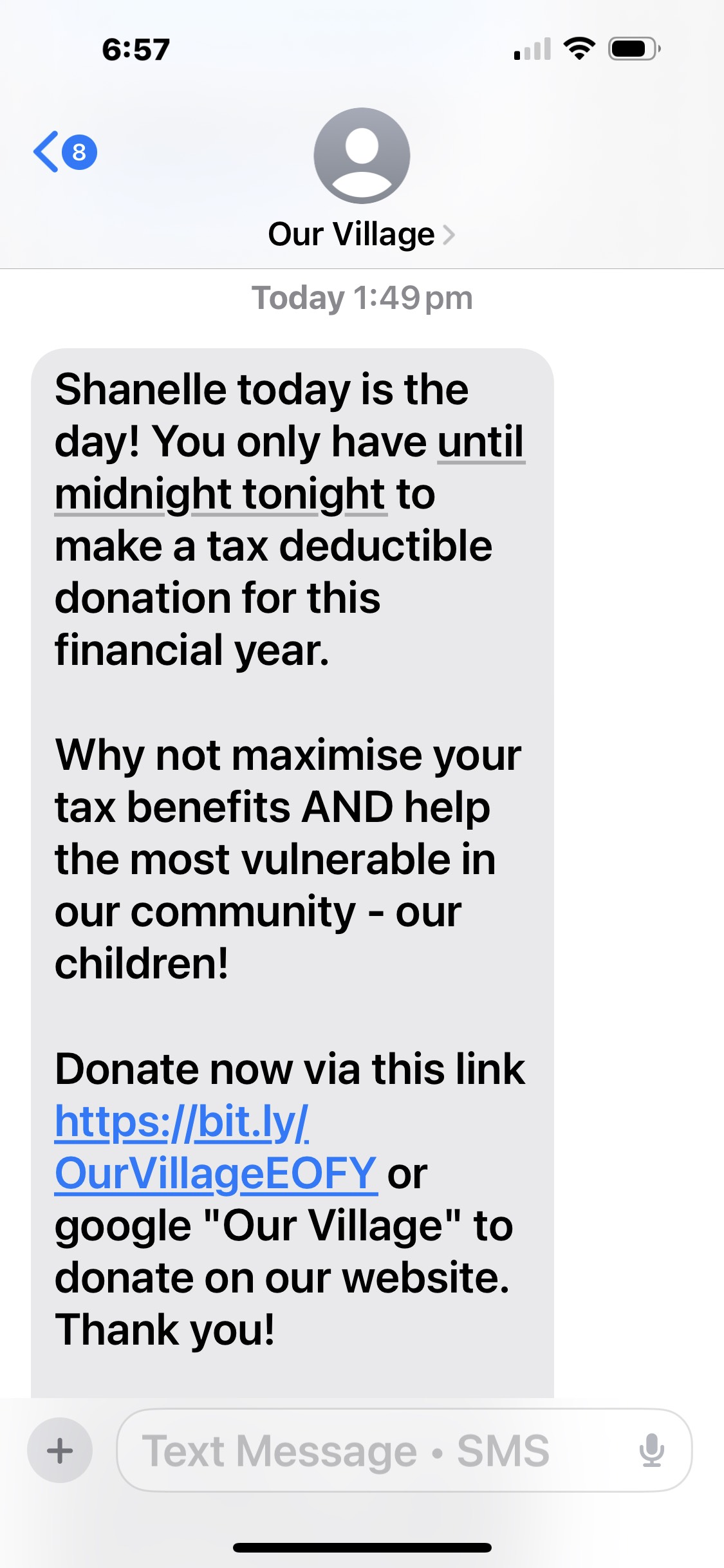 space is tight. But from a supporter’s perspective, it feels like clarity.
space is tight. But from a supporter’s perspective, it feels like clarity.
Unlike shortened links (think: bit.ly), full URLs:
- Showcase brand identity, reducing suspicion
- Increase transparency, especially with cautious users
- Combat phishing concerns, which are at an all-time high
A 2022 study on ‘smishing’ (SMS phishing) published via Cornell University’s arXiv.org found that 16.9 per cent of participants clicked fake links and that clear URL branding significantly influenced perceived credibility.
Best practices for trustworthy SMS fundraising
If you’re rethinking your SMS approach in 2025, here’s how to stay credible and compliant:
👉 Use a full, recognisable URL: like habitat.org.au/donate instead of a generic short link
👉 Include your charity name at the start of the message, not just the end
👉 Obtain proper consent and make it easy to opt-out
👉 Personalise when you can: names and donation history go a long way in building trust
👉 Time it right: avoid after-hours messaging that can feel intrusive
SMS messages that included a branded, trustworthy URL saw 39% more click throughs than generic short URLS.
Here’s a few examples of 2025 tax appeals that used branded URLs well:
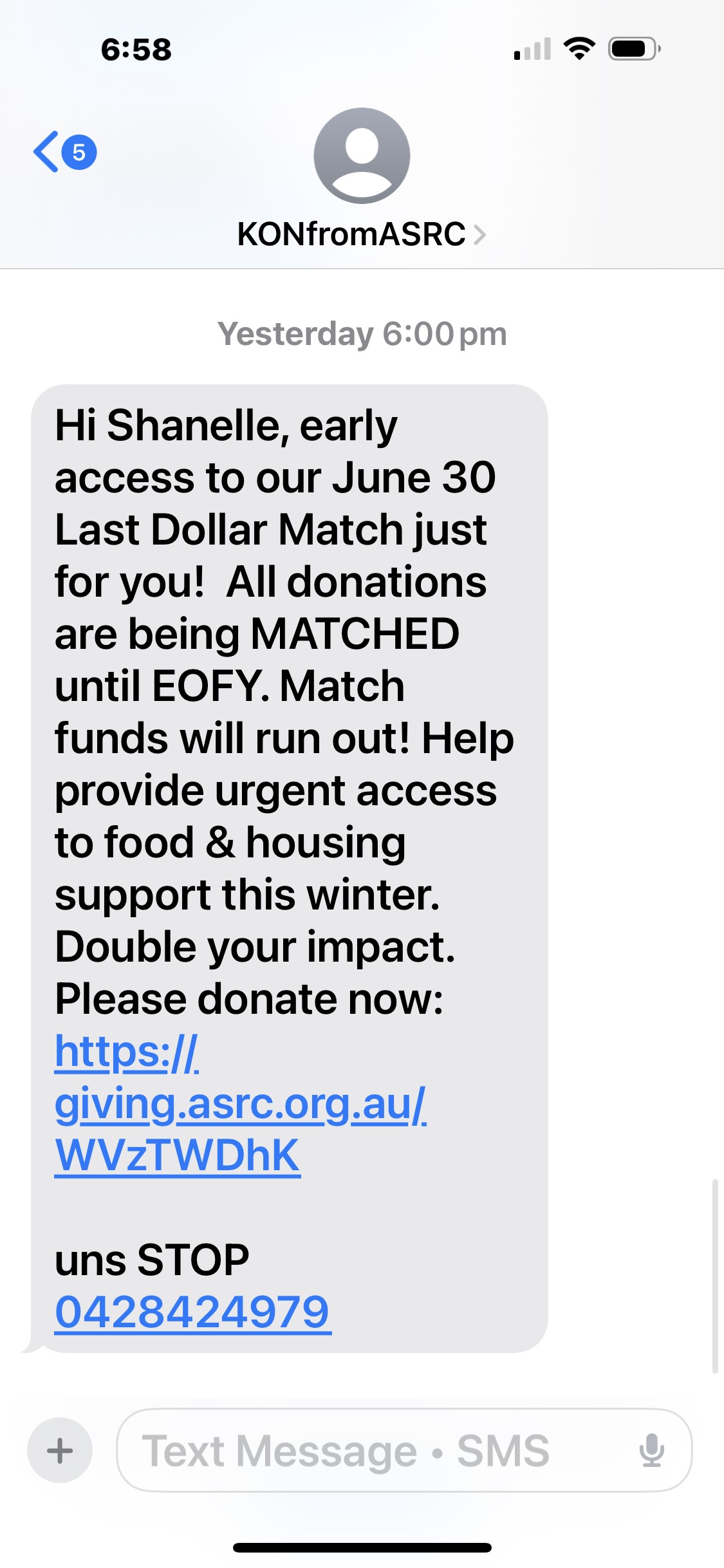
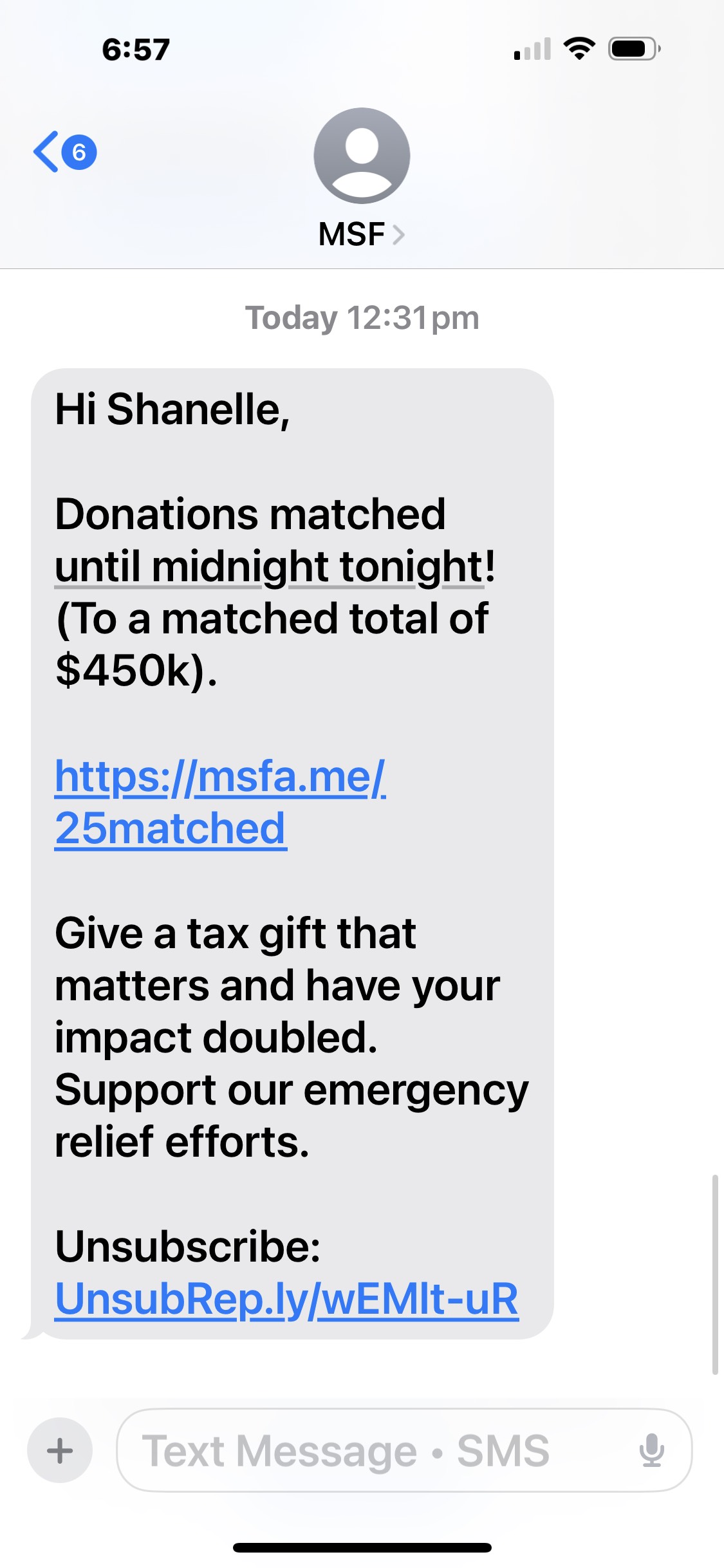
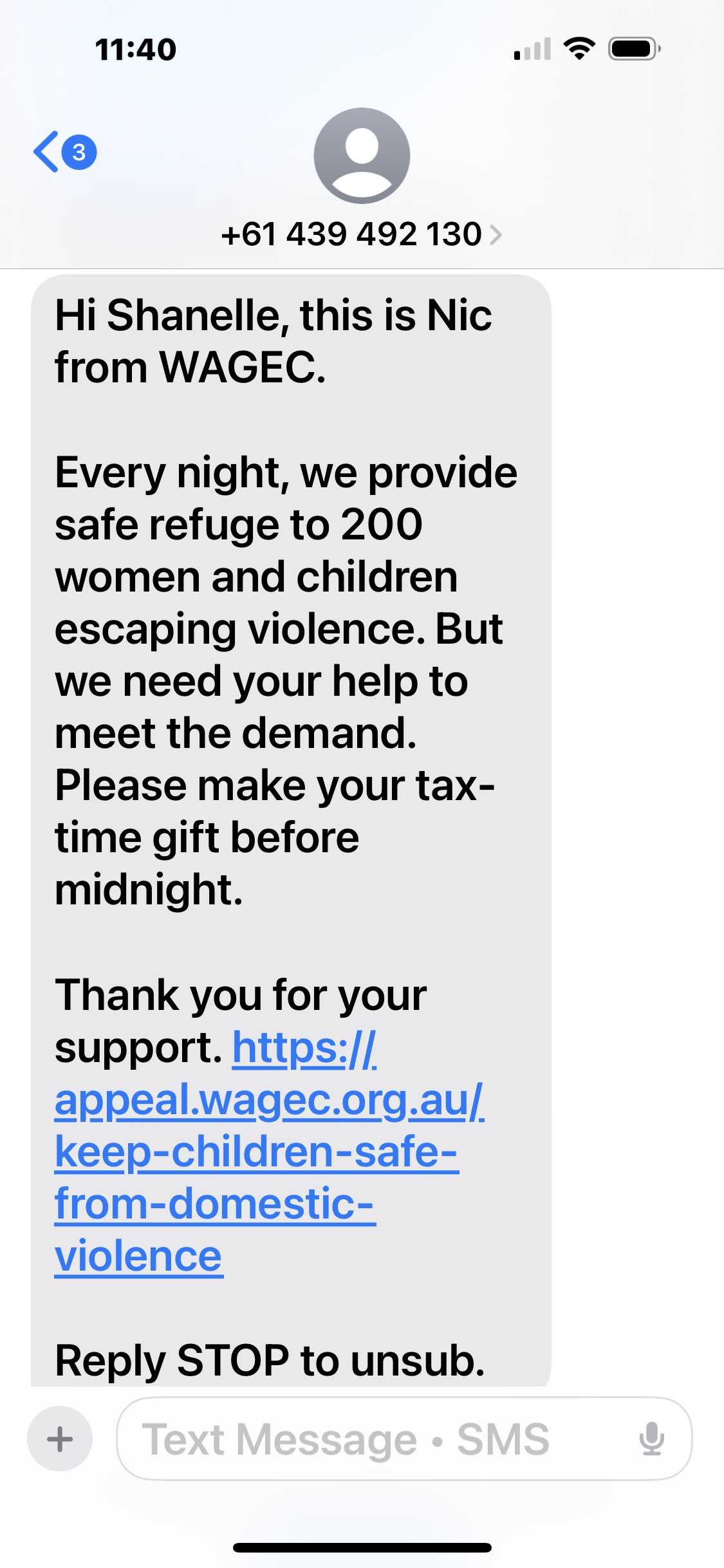
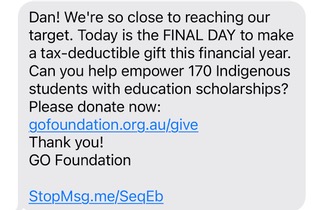
Putting trust back in text
Your link is your reputation. The move back to full URLs isn’t just a technical tweak. It’s a statement of intent in a space where lazy practices and impersonators have eroded trust.
Tell people who you are and where they’re going and watch your engagement improve.
